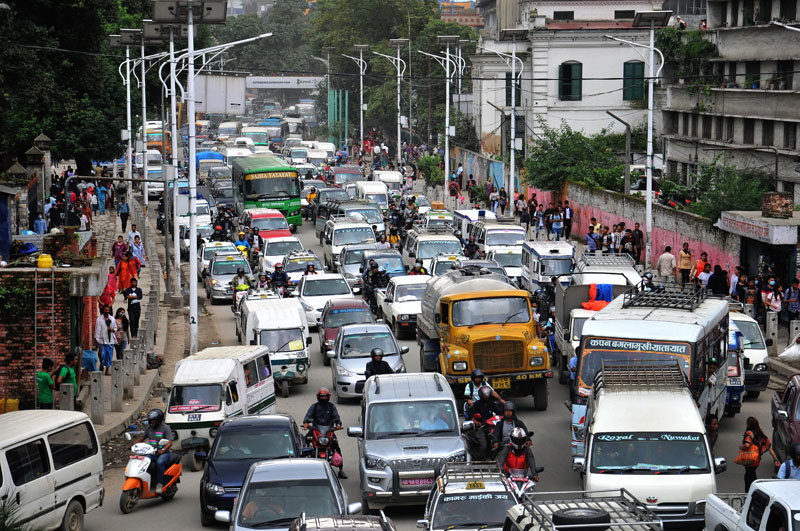Half of valley vehicles flout emission norms
... fitness checking mechanism of the government needs to be revisited
Kathmandu, January 19
Hinting at the possibility of a major flaw in the system to check vehicle fitness in the country, a recent inspection has found that more than 50 per cent of vehicles plying the roads of Kathmandu Valley exceed the emission levels set by the government.
Following increasing levels of pollution in the valley, the Office of the Prime Minister and Council of Ministers recently initiated inspection of emission levels from major pollutants, including vehicles (primarily four-wheelers) and brick kilns.
“Along with brick kilns, our preliminary findings show that more than 300 vehicles, out of around 600 tested in the valley, were emitting pollutants above the set emission standards of the government,” Mahendra Man Gurung, secretary at OPMCM, told THT.
Officials at the Department of Environment blamed lack of timely maintenance of vehicles as the prime reason for emission levels exceeding the permissible levels. They stressed on the need for the Department of Transport Management to strictly enforce the provision requiring vehicles to undergo fitness tests before being allowed to ply the roads.
However, Safala Shrestha, spokesperson for DoE, said the inspection found even vehicles that DoTM deemed ‘fit’ were emitting harmful gases exceeding the set limits. “Perhaps the fitness checking mechanism of the government needs to be revisited.”
DoTM Director General Rupnarayan Bhattarai, on the other hand, refused to accept any shortcomings in the government’s inspection mechanism and declined to comment further on the issue, stating that the inspection was coordinated by OPMCM.
“But we’ll intensify our cross-checking of road worthiness of vehicles and take action against any vehicle flouting the laws,” said Bhattarai.
Vehicles are major emitters of harmful pollution components, such as carbon monoxide and hydrocarbons. As per the Vehicle Emission Standard implemented by the government in 2003, four-wheelers registered in Nepal in 1980 or before can emit CO not exceeding 4.5 per cent of the total emission, while they should not emit more than 1,000 parts-per million hydrocarbons.
Four-wheelers registered in the country after 1981 should not emit CO exceeding three per cent of the total emission and should emit less than 1,000 ppm hydrocarbons.
Two-wheelers should not emit CO exceeding 4.5 per cent of the total emission while their hydrocarbon emission should be less than 7,800 ppm.
“Apart from a few new vehicles, majority of the inspected vehicles exceeded the permissible emission levels,” said OPMCM’s Gurung.
According to him, the DoTM should take action against owners of such vehicles or at least blacklist vehicle numbers of such automobiles to reduce pollution in Kathmandu Valley. Gurung also stressed on the need to adopt effective policies and amend emission standards to make cities pollution-free.
READ ALSO:






